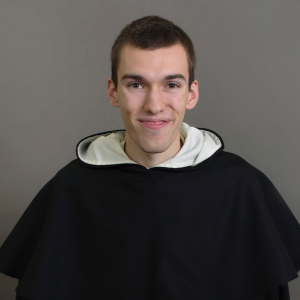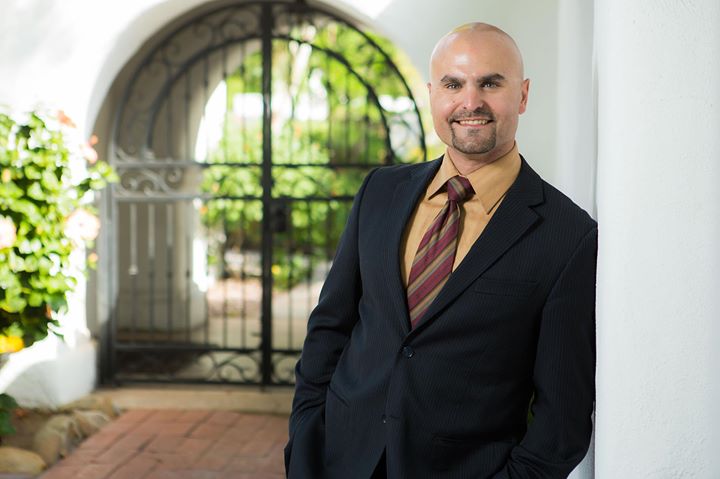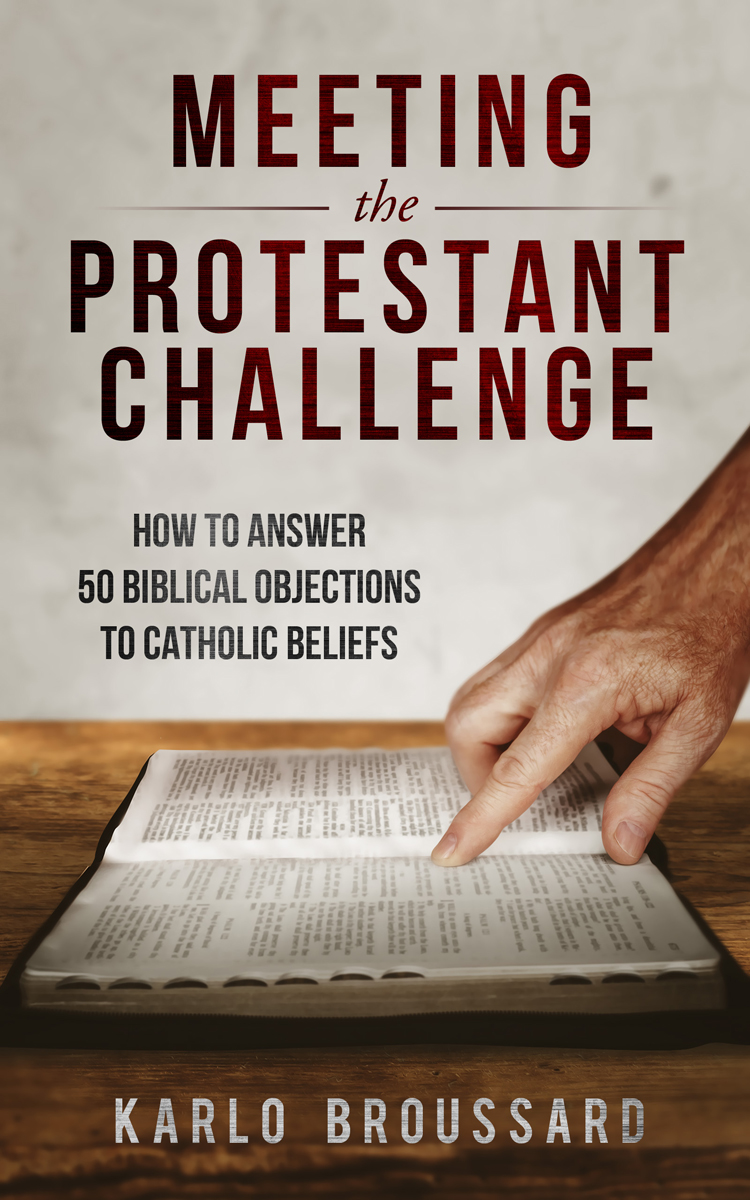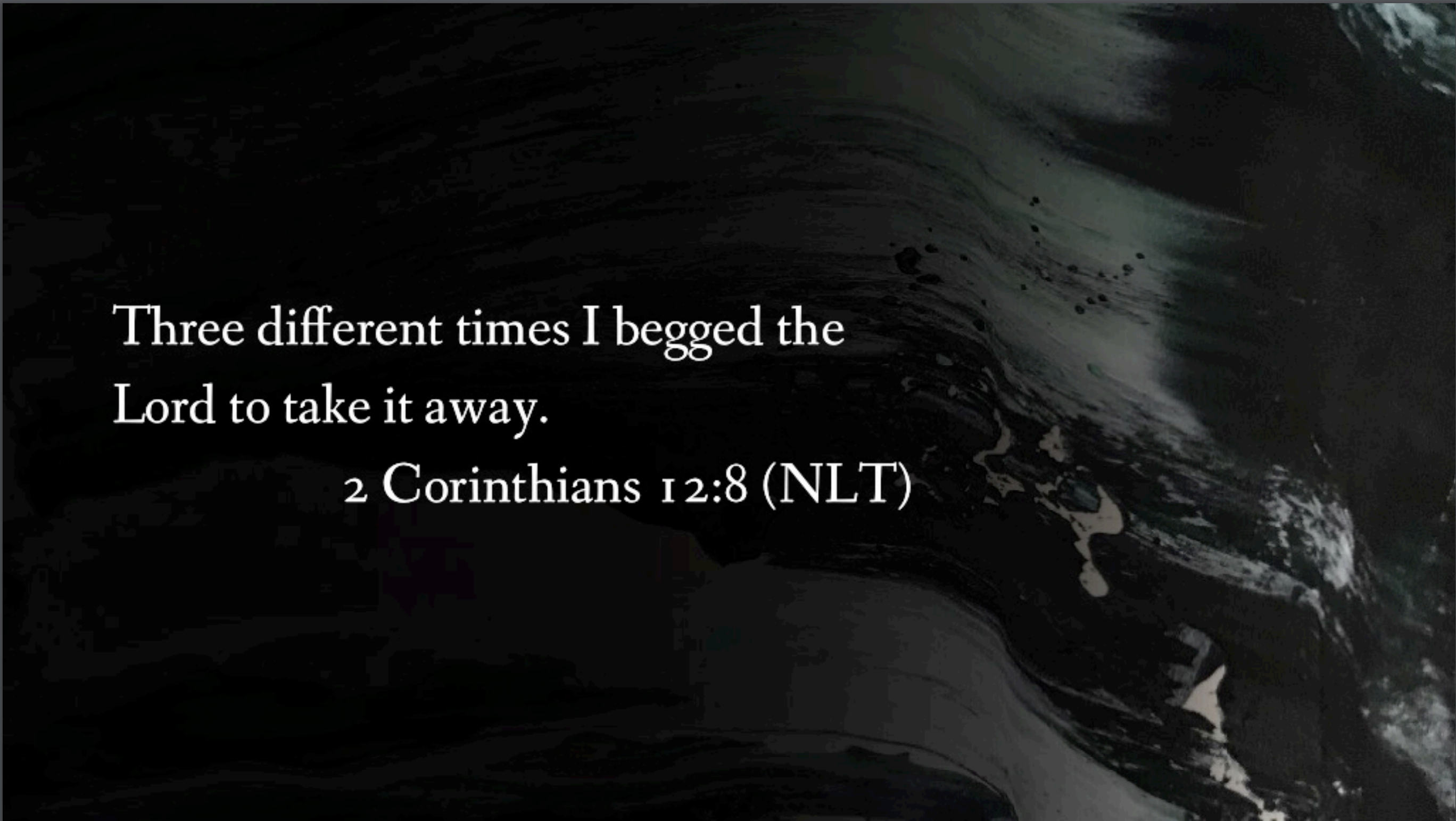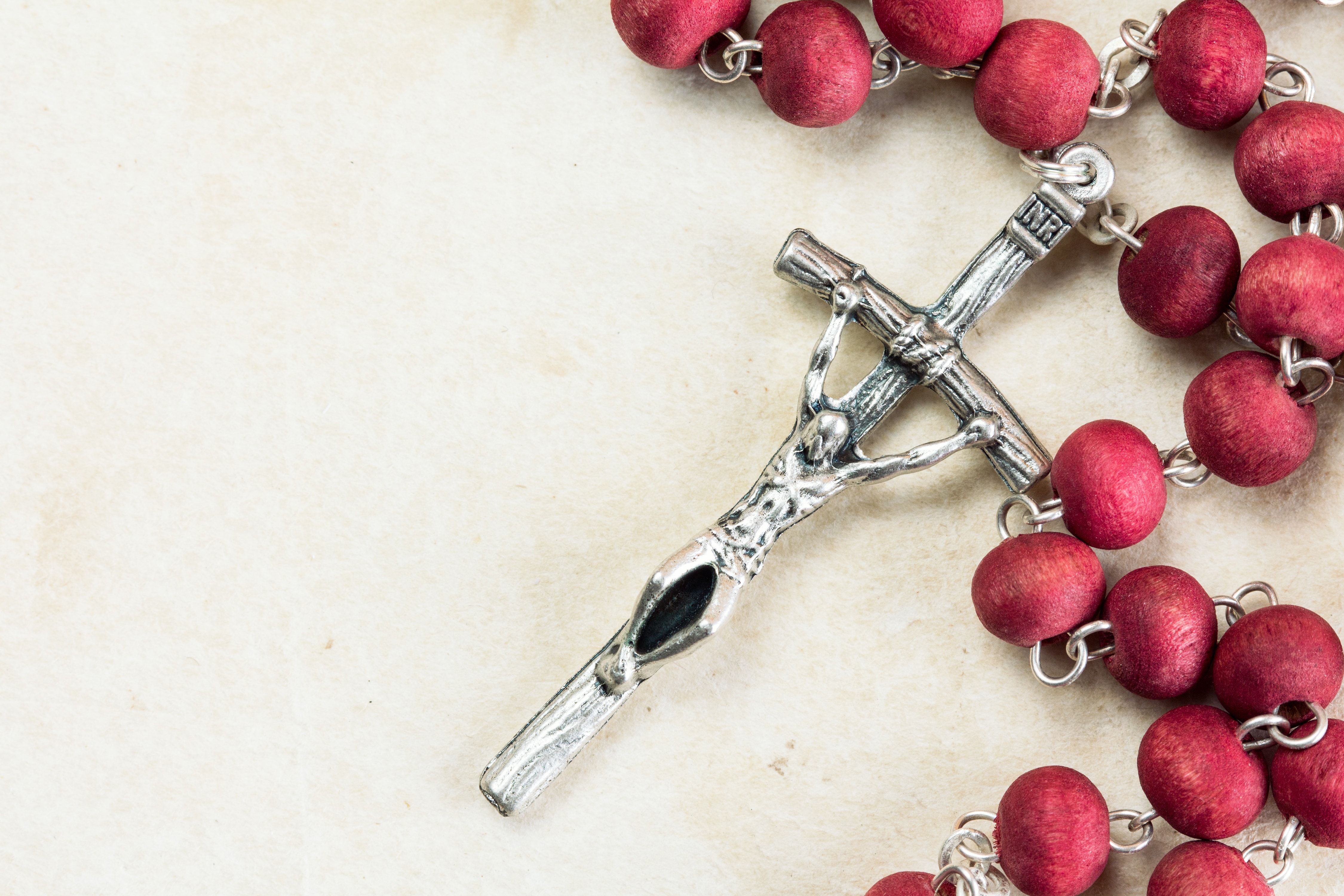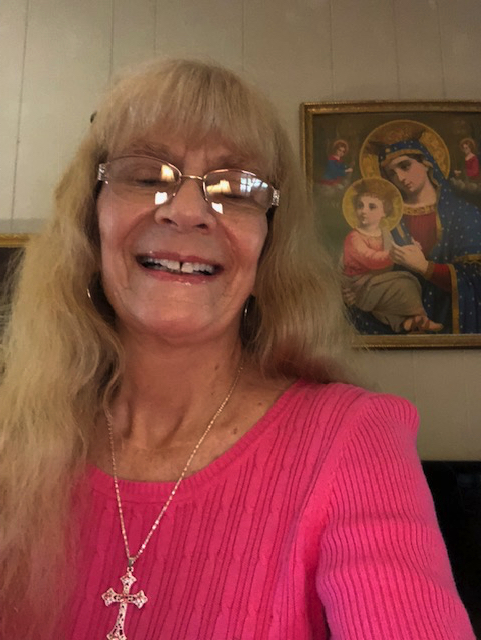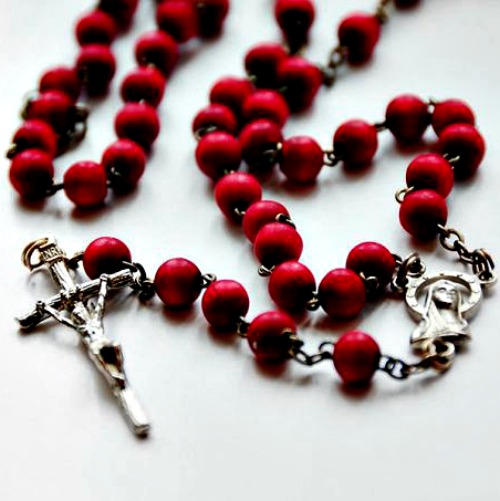Americans know that in 1492 Christopher Columbus “sailed the ocean blue,” but how many know that in the same year the heroic Catholic monarchs Ferdinand and Isabella conquered the Moors in Grenada? Americans would also probably recognize 1588 as the year of the defeat of the Spanish Armada by Francis Drake and the rest of Queen Elizabeth’s pirates. It was a tragedy for the Catholic kingdom of Spain and a triumph for the Protestant British Empire, and the defeat determined the kind of history that would one day be taught in American schools: Protestant British history.
As a result, 1571, the year of the battle of Lepanto, the most important naval contest in human history, is not well known to Americans. October 7, the Feast of Our Lady of the Rosary, celebrates the victory at Lepanto, the battle that saved the Christian West from defeat at the hands of the Ottoman Turks.
That this military triumph is also a Marian feast underscores our image of the Blessed Virgin prefigured in the Canticle of Canticles: “Who is she that cometh forth as the morning rising, fair as the moon, bright as the sun, terrible as an army set in array?” In October of 1564, the Viziers of the Divan of the Ottoman Empire assembled to urge their sultan to prepare for war with Malta. “Many more difficult victories have fallen to your scimitar than the capture of a handful of men on a tiny little island that is not well fortified,” they told him. Their words were flattering but true. During the five-decade reign of Soleiman the Magnificent, the Ottoman Empire grew to its fullest glory, encompassing the Caucuses, the Balkans, Anatolia, the Middle East, and North Africa. Soleiman had conquered Aden, Algiers, Baghdad, Belgrade, Budapest, Rhodes, and Temesvar. His war galleys terrorized not only the Mediterranean Sea, but the Red Sea and the Persian Gulf as well. His one defeat was at the gates of Vienna in 1529.
The Defense of Malta
Malta was an infertile, dusty rock with so few natural springs that the Maltese had to collect rainwater in large clay urns. The island could sustain only the smallest population. Yet this little island guarded the Mediterranean passage from the Islamic East to the Christian West.
From its excellent natural harbors, the galleys of the Knights of Saint John could sail forth and disrupt any Turkish assault on Italy. They could also board and seize Turkish merchantmen carrying goods from France or Venice to be hawked in the markets of Constantinople. The ladies of Soleiman’s harem, who accumulated great wealth speculating in glass and other Venetian luxuries, nagged the sultan to take Malta.
Soleiman had bigger goals than pleasing these matrons, and he knew that, in Turkish possession, the harbors of Malta would afford him a base from which to continue his raids on the coast of Italy. With the greater control of the sea that it would afford him, he would be able to bring Venice to heel. An invasion of Sicily would be possible. Soleiman’s greatest dream, however, the dream of all Turks, the dream his soldiers toasted before setting off on every campaign, was the conquest of Rome. There the Turks could transform Michelangelo’s St. Peter’s, then under construction, into a mosque, just as they had Constantinople’s Hagia Sophia more than a century before.
Although the sultan had led his army on twelve major campaigns, this time his age would keep him home. The Turks sailed for Malta in the spring of 1565, and on May 18, their fleet was spotted offshore. That night, Jean de la Valette, the seventy-one-year-old Grand Master of the Knights of Saint John, led his warriors into their chapel where they confessed and then assisted at the Holy Sacrifice of the Mass.
“A formidable army composed of audacious barbarians is descending on this island,” he told them. “These persons, my brothers, are the enemies of Jesus Christ. Today it is a question of the defense of our Faith. Are the Gospels to be superseded by the Koran? God on this occasion demands of us our lives, already vowed to His service. Happy will be those who first consummate this sacrifice.”
Many of Valette’s 700 knights and their men-at-arms did just that. While Europe stood idly by, expecting the fortress to fall, the knights held their island against an Ottoman army of 40,000, including 6500 of the sultan’s elite Janissaries. Three-quarters of the Turkish army were killed over the four-month siege, before the Ottoman survivors turned and straggled back to Constantinople.
Slaughter in Szigetvar
Soleiman was outraged. “I see that it is only in my own hand that my sword is invincible!” exploded the sultan, and by May of the following year he was leading an army of 300,000 men across the plains of Hungary, bound for Vienna.
When the Hungarian Count of Szigetvar, a fortress city on the eastern frontier of the Holy Roman Empire, led a successful raid on the Ottoman supply trains, Soleiman wheeled his massive army and swore to wipe the city off the map. Turkish engineers prepared flotillas and bridges to span the Drava and Danube rivers to lay siege to Szigetvar. To greet the sultan and to inspire his men, who were outnumbered fifty to one, Count Miklos Zrinyi raised a large crucifix over his battlements and fired his cannons in defiance. But Zrinyi knew that in a Hungary infested with Protestantism, hope of relief was even fainter than any the Knights of Malta had entertained the previous year.
For nearly a month, wave after wave of Turkish infantry were thrown back from the walls. Soleiman offered Zrinyi rule of all Croatia if he would yield his city, but he answered, “No one shall point his finger on my children in contempt.”
When the breaches made by the Turkish artillery were too large to defend, the Catholic count assembled his last 600 men. “With this sword” he shouted as he held the bejeweled weapon aloft, “I earned my first honor and glory. I want to appear with it once more before the eternal throne to hear my judgment.” Charging out of the remains of their stronghold, the courageous band was swallowed by a sea of Turks. To the last man the Hungarian knights died defending the Christian West. The Turks, furious at the losses their army had suffered, consoled themselves according to their grisly custom: they slaughtered every Christian civilian who had survived the siege.
Soleiman the Magnificent did not live to witness the massacre. He had died of dysentery four days earlier. Had he survived, however, this victory would have given him no comfort. The capture of Szigetvar was Pyrrhic. The Ottoman army had exhausted itself and was in no condition to carry on the campaign. Though they all died, Count Zrinyi and his heroic band were the true victors.
Back in Constantinople, Soleiman’s son ascended the throne by the usual Ottoman method: a complex harem intrigue designed to eradicate his worthier brothers. Unlike every previous sultan, Selim II, nicknamed “the Sot,” had little interest in warfare. His enthusiasms were for wine, his extraordinarily deviant sexual appetite, wine, poetry, and wine. Nevertheless, he sensed that without a decisive victory, the mighty empire his father had left him would be eclipsed.
The Attack on Cyprus
Selim II invaded Cyprus, the source of his favorite vintage. Half the population were Greek Orthodox serfs laboring under the exacting rule of their Venetian Catholic masters, and they offered little resistance. The Venetian senate was half-hearted about fighting for the island; upon receiving word of the invasion, senate members voted by the very small margin of 220 to 199 to defend it.
The Turks rolled through Cyprus, and after a forty-six day siege, the capital city of Nicosia fell on September 9, 1570. The 500 Venetians in the garrison surrendered on terms, but once the city gates were opened, the Turks rushed in and slaughtered them. Then they set on the civilian population, massacring twenty thousand people, “some in such bizarre ways that those merely put to the sword were lucky.” Every house was plundered. To protect their daughters from rape, mothers stabbed them and then themselves, or threw themselves from the rooftops. Still, “[t]wo thousand of the prettier boys and girls were gathered and shipped off as sexual provender for the slave markets in Constantinople.”
Then God intervened and sent one of history’s greatest popes, St. Pius V, who declared, “I am taking up arms against the Turks, but the only thing that can help me is the prayers of priests of pure life.” Michael Ghislieri, an aged Dominican priest when he ascended the Chair of Peter, faced two foes: Protestantism and Islam. He was up to the task. He had served as Grand Inquisitor, and the austerity of his private mortifications was a contrast to the lifestyles of his Renaissance predecessors. During his six-year reign, he promulgated the Council of Trent, published the works of Thomas Aquinas, issued the Roman Catechism and a new missal and breviary, created twenty-one cardinals, excommunicated Queen Elizabeth, and, aided by St. Charles Borromeo, led the reform of a soft and degenerate clergy and episcopacy.
The Holy League
In a papacy of great achievements, the greatest came on March 7, 1571, on the feast of his fellow Dominican, St. Thomas Aquinas. At the Dominican Church of Santa Maria Sopra Minerva in Rome, Pope Pius formed the Holy League. Genoa, the Papal States, and the Kingdom of Spain put aside their jealousies and pledged to assemble a fleet capable of confronting the sultan’s war galleys before the east coast of Italy became the next front in the war between the Christianity and Islam.
The day was not a total triumph, though. Venice refused to join. Though at war with the Turks over Cyprus, the Venetians never failed to consider their economy. They might well lose Cyprus, but a fast peace afterward would lead to the resumption of normal trade relations with the Turks. Moreover, the loss of the Venetian fleet in an all-out battle with the sultan’s galleys would be a disaster for a state so dependent on seaborne commerce. Walking back across the Tiber, the old monk wept for the future of Christendom. He knew that without the galleys of Venice, there was no hope of a fleet strong enough to face the Turks.
The rest of Europe ignored Pius’s call for a new crusade. In fact, the Queen of England, Elizabeth I, through her spymaster, Sir Francis Walsingham, actively enlisted the aid of the Turks in her wars against Spain. France had openly traded with the Turks for years and as recently as 1569 had drawn up an extensive commercial treaty with them. For years the French had allowed Turkish ships to harbor in Toulon, and the oars that rowed Turkish galleys came from Marseilles. The cannons that brought down the walls of Szigetvar were of French design. With Venice at war with Constantinople, markets once filled by Venetian goods were open to France. Redeeming France from utter disgrace were the Knights of Saint John of Malta, who sent their galleys to join the Holy League, eager to do battle with Islam.
As the Pope prayed for Venice to answer a higher call, a new breed of fiery priests led by stirring preachers like St. Francisco Borgia, superior general of the Jesuits, inflamed the hearts of Christian Europeans throughout the Mediterranean with their sermons against Islam. Enough Venetians must have been listening, because on May 25 Venice at last joined the Holy League. By fits and starts, with hesitation and quarreling on the part of a few of the principal players, the fleet of the Holy League was forming.
The man chosen by Pius V to serve as Captain General of the Holy League did not falter: Don John of Austria, the illegitimate son of the late Holy Roman Emperor, Charles V, and half-brother of Philip II, King of Spain. The young commander had distinguished himself in combat against Barbary corsairs and in the Morisco rebellion in Spain, a campaign in which he demonstrated his capacity for swift violence when the threat called for it and restraint when charity demanded it.
He was a great horseman, a great swordsman, and a great dancer. With charm, wit, and good looks in abundance, he was popular among the ladies of court. Since childhood he had cultivated a deep devotion to the Blessed Virgin. He spoke Latin, French, Italian, and Spanish, and kept a pet marmoset and a lion cub that slept at the foot of his bed. He was twenty-four years old.
Taking the young warrior by the shoulders, Pius V looked Don John of Austria in the eye and declared, “The Turks, swollen by their victories, will wish to take on our fleet, and God—I have the pious presentiment—will give us victory. Charles V gave you life. I will give you honor and greatness. Go and seek them out!”
The Death of Bragadino
In late summer of 1571, as Don John was making his way to the harbor at Messina to take command of his fleet, the situation on Cyprus was growing more desperate. The Venetian colonists had claimed the lives of some 50,000 Turks with their intrepid defense of Famagusta, but when their gunpowder and supplies were exhausted, when they had eaten their last horse, their shrewd governor, Marcantonio Bragadino, sent a message to the Turkish commander, Lala Mustafa, asking for terms. The Turks agreed to give the remaining Venetian soldiers passage to Crete on fourteen Turkish galleys in exchange for the surrender of the city. The Greek Cypriots would be allowed to retain their property and their religion.
On August 4, 1571, Bragadino, with a small entourage including several young pages, met with Mustafa and his advisors in the Turkish general’s tent. Mustafa lecherously demanded Bragadino’s page, Antonio Quirini, as a hostage for the fourteen galleys. When Bragadino calmly refused, he and his men were pushed out of the tent by Mustafa’s guards. Bragadino was bound and forced to watch as his attendants were hacked to pieces. The pages were led off in chains. The Turks thrice thrust the Venetian governor’s neck on the executioner’s block and thrice lifted it off. Instead of his head, they cut off his nose and ears. To prevent his bleeding to death, they cauterized the wounds with hot irons.
The Venetian soldiers of the garrison, unaware that Mustafa had broken the terms of the surrender, began their march down to the galleys, expecting passage to Crete. Once aboard, the Venetians were set upon by Turkish soldiers, who stripped them of their clothes and chained them to the oars. From their benches they witnessed some of the horrifying ordeal to which the Turks now subjected Bragadino.
First the Turks fitted the governor with a harness and bridle and led him around the Turkish camp on his hands and knees. Ass panniers filled with dung were slung across his back. Each time he passed Lala Mustafa’s tent he was forced to kiss the ground. Then he was strung up in chains, hoisted over a galley spar, and left to hang for a time. Finally, the courageous governor was dragged into the city square and lashed to the pillory, where the Turks flayed him alive. Witnesses said they heard him whispering a Latin prayer. He died “when the executioner’s knife reached the height of his navel.” The diabolical orgy did not end there. Mustafa had the governor’s skin stuffed, hoisted it up the mast of his galley, and joined the Ottoman fleet headed west.
Don John Takes Command
As Bragadino was losing his life to the Turkish monsters, Don John was inspecting his ships. Of the 206 galleys and 76 smaller boats that constituted the Holy League fleet, more than half came from Venice. The next largest contingent came from Spain, and included galleys from Sicily, Naples, Portugal, and Genoa, the latter owned by the Genovese condottiere admiral, Gianandrea Doria. Not only was Doria renting his services and the use of his ships to Philip at costs thirty percent higher than Philip paid to run his own galleys, he was lending the money to the Spanish king at fourteen percent! The balance of the galleys came from the Holy See.
Don John took charge of his fleet and promptly forbade women from coming aboard the galleys. He declared that blasphemy among the crews would be punishable by death. The whole fleet followed his example and made a three-day fast.
By September 28, the Holy League had made its way across the Adriatic Sea and was anchored between the west coast of Greece and the Island of Corfu. By this time, news of the death of Bragadino had reached the Holy League, and the Venetians were determined to settle the score. Don John reminded his fleet that the battle they would soon engage in was as much spiritual as physical.
Pius V had granted a plenary indulgence to the soldiers and crews of the Holy League. Priests of the great orders, Franciscans, Capuchins, Dominicans, Theatines, and Jesuits, were stationed on the decks of the Holy League’s galleys, offering Mass and hearing confessions. Many of the men who rowed the Christian galleys were criminals. Don John ordered them all unchained, and he issued them each a weapon, promising them their freedom if they fought bravely. He then gave every man in his fleet a weapon more powerful than anything the Turks could muster: a Rosary.
On the eve of battle, the men of the Holy League prepared their souls by falling to their knees on the decks of their galleys and praying the Rosary. Back in Rome, and up and down the Italian Peninsula, at the behest of Pius V, the churches were filled with the faithful telling their beads. In Heaven, the Blessed Mother, her Immaculate Heart aflame, was listening.
In the quiet of night, Don John met with his admirals on the deck of his flagship Real to review once more the order of battle. He had divided his fleet into four squadrons. Commanding the squadron on his left flank was a Venetian warrior named Agostin Barbarigo. The center squadron was commanded by Don John, assisted on either side by his vice admirals, the Roman Marcantonio Colonna, and the Venetian Sebastian Veniero. Directly behind the center squadron, Don John stationed the reserve squadron, commanded by the Spaniard Don Alvaro de Bazan, the Marquis of Santa Cruz. The right squadron was under the command of the Genovese Gianandrea Doria. Arrayed for battle, the mighty armada of the Holy League looked like nothing if not a Latin Cross.
Doria, despite his mercenary motives, had been the source of sound tactical counsel.
“Cut off the spars in the prows of the fleet’s galleys,” he told Don John. Galleys had been equipped with bow spars or rams since the days of Salamis. “This will permit the centerline bow cannons to depress further and fire their rounds at the waterline of the enemy hulls.” Don John’s famous order to remove these spars was a signal moment in naval warfare, heralding the age of gunpowder.
Doria also advised taking the League’s six galleases and stationing them in the van, two before each of the three forward squadrons. A galleas was a large, multi-decked, Venetian merchant galley that had been outfitted with cannons not only on its bow, but also along its port and starboard sides. Where an ordinary galley was most vulnerable, a galleas packed heavy firepower. Don John increased their lethality by packing the decks with Spanish shooters (arquebusiers), bearing their handheld, smoothbore, heavy guns. Though slow moving, these six galleases would provide a powerful shock at the start of the battle.
Doria was an admiral, but he was also a shipowner. He looked at Don John, raised his eyebrows, opened his palm, and offered, “There is still time, your grace, to avoid pitched battle.”
The young Captain General stood surrounded by men older and with greater seafaring and military experience than he. Silence filled the small stateroom as these men waited to hear his response. He caught their eyes, each one of them, as he looked around.
“Gentlemen,” he said. “The time for counsel has passed. Now is the time for war.”
The Divine Breath
It was. At dawn on October 7, 1571, the Holy League rowed down the west coast of Greece and turned east into the Gulf of Patras. When the morning mist cleared, the Christians, rowing directly against the wind, saw the squadrons of the larger Ottoman fleet arrayed like a crescent from shore to shore, bearing down on them under full sail.
As the fleets grew closer, the Christians could hear the gongs and cymbals, drums and cries of the Turks. The men of the Holy League quietly pulled at their oars, the soldiers stood on the decks in silent prayer. Priests holding large crucifixes marched up and down the decks exhorting the men to be brave and hearing final confessions.
Then the Blessed Virgin intervened.
The wind shifted 180 degrees. The sails of the Holy League were filled with the Divine breath, driving them into battle. Now heading directly into the wind, the Turks were forced to strike their sails. The tens of thousands of Christian galley slaves who rowed the Turkish vessels felt the sharp sting of the lash summoning them up from under their benches and demanding they take hold of their oars and pull against the wind.
Don John knelt on the prow of Real and said a final prayer. Then he stood and gave the order for the Holy League’s battle standard, a gift from Pius V, to be unfurled. Christians up and down the battle line cheered as they saw the giant blue banner bearing an image of our crucified Lord.
The fleets engaged at midday. The first fighting began along the Holy League’s left flank, where many of the smaller, swifter Turkish galleys were able to maneuver around Agostin Barbarigo’s inshore flank. The Venetian admiral responded with a near impossibility: He pivoted his entire squadron, fifty-four ships, counterclockwise and began to pin the Turkish right flank, commanded by Mehemet Sirrocco, against the north shore of the Gulf of Patras. Gaps formed in Barbarigo’s line and Ottoman galleys broke into the intervals. As galley pulled up along galley, the slaughter brought on by cannon, musket ball, and arrow was horrific, but the Venetians in time prevailed. Barbarigo took an arrow to the eye, but before he died he learned of the death of Sirrocco and the crushing defeat of the Turkish right line.
In the center of the battle, breaking a convention of naval warfare, the opposing flagships engaged—Don John’s Real with Muezzinzade Ali Pasha’s Sultana. Twice Spanish infantry boarded and drove the Sultana’s Janissaries back to the mast, and twice they were driven back to the Real by Ottoman reinforcements. Don John led the third charge across Sultana’s bloodied deck. He was wounded in the leg, but Ali Pasha took a musketball to the forehead. One of Real’s freed convicts lopped off the Turkish admiral’s head and held it aloft on a pike. The Muslims’ sacred banner, with the name of Allah stitched in gold calligraphy 28,900 times, which Islamic tradition held was carried in battle by the Prophet, was captured by the Christians. Terror struck the Turks, but the fight was far from won.
On the Holy League’s right flank, Doria was forced to increase the intervals between his galleys to keep his line from being flanked on the south by the larger Ottoman squadron under the command of the Algerian Uluch Ali. When the space between Doria’s squadron and Don John’s grew large enough, Uluch Ali sent his corsairs through the gap to envelop the galleys of Don John’s squadron from behind. Don Alvaro de Bazan, commanding the Holy League’s reserve squadron of thirty-five galleys, had carefully kept his ships out of the fray until the moment came when he was most needed. Now he entered the fight, rescuing the center of the Holy League from the Turkish vessels that had surrounded them before turning his squadron south to aid the outmanned Doria.
The fighting lasted for five hours. The sides were evenly matched and well led, but the Divine favored the Christians, and once the battle turned in their favor it became a rout. All but thirteen of the nearly 300 Turkish vessels were captured or sunk and over 30,000 Turks were slain. Not until the First World War would the world again witness such carnage in a single day’s fighting. In the aftermath of the battle, the Christians gave no quarter, making sure to kill the helmsmen, galley captains, archers, and Janissaries. The sultan could rebuild ships, but without these men, it would be years before he would be able to use them.
The news of the victory made its way back to Rome, but the Pope was already rejoicing. On the day of the battle, Pius had been consulting with his cardinals at the Dominican Basilica of Santa Sabina on the Aventine Hill. He paused in the midst of their deliberations to look out the window. Up in the sky, the Blessed Mother favored him with a vision of the victory. Turning to his cardinals he said, “Let us set aside business and fall on our knees in thanksgiving to God, for he has given our fleet a great victory.”
SIDEBARS
Interesting Facts about the Battle
- A young contemporary of Don John’s, Miguel Cervantes, fought with abandon and lost his left hand to a Turkish blade. With his remaining hand, he later penned Spain’s greatest novel, Don Quixote.
- On another galley, a soldier of the Holy League, his soul torn with despair, took his sword to the ship’s crucifix. The blade instantly shattered. Many years later, an attempt to re-forge the sword was made, but when the new blade was pulled from the fire, it fell to pieces.
- The crucifix on board the Real, which twisted itself to avoid a Turkish cannonball, is displayed in a side chapel of the cathedral of Barcelona.
- Gianandrea Doria carried on his galley a gift from the king of Spain, an image that is now displayed in the Doria chapel in the cathedral in Genoa. Exactly forty years before the battle of Lepanto, the Blessed Virgin appeared to a peasant boy leaving a miraculous image of herself on his smock. The bishop of the region immediately commissioned an artist to paint five copies of the image, and he touched each one to the original. Our Lady of Guadalupe was present at Lepanto.
Timeline for the Feast of Our Lady of the Rosary
- In thanksgiving for the victory at Lepanto on the first Sunday of October 1571, Pope St. Pius V ordered that a commemoration of the Rosary should be made on that day.
- At the request of the Dominican Order, in 1573 Pope Gregory XIII allowed the feast to be kept in all churches with an altar dedicated to the Holy Rosary.
- In 1671, the observance of the feast was extended by Pope Clement X to the whole of Spain.
- Pope Clement XI extended the feast to the universal Church after the important victory over the Turks gained by Prince Eugene on August 6, 1716, the feast of our Lady of the Snows, at Peterwardein in Hungary.
Other Feasts That Celebrate Military Victories
- May 24, Our Lady Help of Christians, commemorates the defeat of one of history’s greatest generals (and most wicked men), Napoleon Bonaparte.
- August 6, The Transfiguration of Christ, was extended to the Universal Church by Pope Calixtus III to celebrate legendary Hungarian general János Hunyadi’s victory over the Turks at Belgrade in 1456. This feast has great significance for Orthodox and Eastern Rite Catholic churches.
- September 12, the Holy Name of Mary, celebrates the victory of John Sobieski and his Polish warriors over the Ottoman Turks at the gates of Vienna in 1683.
Further Reading
- Lepanto by G. K. Chesterton (Ignatius, 2004)
- The Galleys at Lepanto by Jack Beeching (Scribner, 1983 – out of print; used copies available online)
- Ten Dates Every Catholic Should Know by Diane Moczar (Sophia Institute, 2006)


